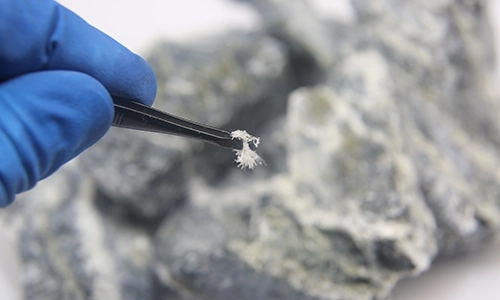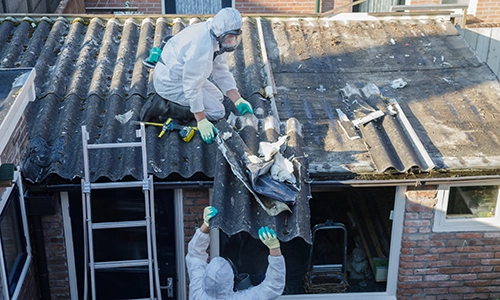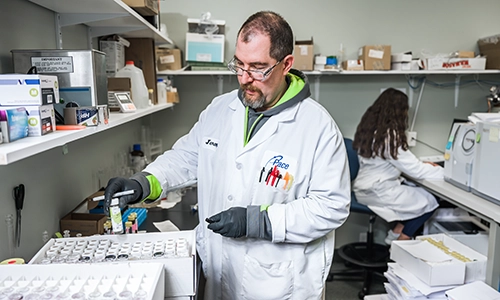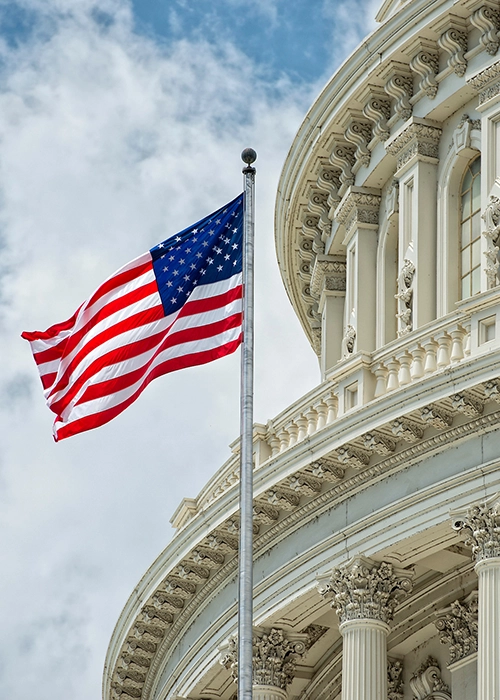Your Trusted Partner For Asbestos Testing And Analyzing
Pace® has tested for asbestos in air, water, soil, dust, and bulk samples for over 30 years. Our asbestos testing services help industrial hygienists, environmental consultants, engineers, construction workers, real estate agents, abatement contractors, and homeowners. We use advanced lab equipment and approved methods to get accurate results. Testing for asbestos helps our customers make better decisions and follow industry standards and regulations confidently.
Our accredited asbestos testing laboratories offer comprehensive identification and isolation of all six regulated asbestos forms in bulk materials and soils, including.
- Chrysotile (white)
- Amosite (brown)
- Crocidolite (blue)
- Fibrous Anthophyllite
- Fibrous Tremolite
- Fibrous Actinolite
Additionally, Pace® provides specialized testing for non-regulated amphiboles (NRAs), natural occurrences of asbestos (NOAs), and asbestiform talc in consumer products such as cosmetics.

What Is Asbestos?
Researchers recognize asbestos for its carcinogenic properties. Flexible fibers that resist heat, electricity, and corrosion make up asbestos. These features made asbestos useful for many products like insulation, fireproofing materials, automotive brakes, and wallboard. However, these same qualities also lead to health problems from asbestos exposure.
What Are The Health Hazards Of Asbestos?
Asbestos is a well-recognized health hazard and highly regulated by various agencies, including OSHA and the EPA. Breathing in asbestos fibers can cause asbestosis, which is a scarring of the lungs. This can lead to a loss of lung function that often worsens and can lead to long-term disability and even death.
Exposure to asbestos can cause lung disease such as lung cancer and mesothelioma. Mesothelioma is a deadly tumor that affects the lining of the lungs or stomach. Recent research has shown that all types of asbestos, including the commonly used chrysotile, can be hazardous.


How Does Asbestos Exposure Occur?
When someone disturbs materials with asbestos, they can release fibers into the air. This can happen during product use, home maintenance, repairs, demolition, or remodeling. Damaging or disturbing these materials releases particles and fibers into the air. This causes a risk of asbestos exposure.
Asbestos Testing Services: Techniques For Asbestos Detection
Analysts typically confirm the presence of asbestos in a material sample using PLM. Asbestos fibers form bundles, with individual fibers split at the end. You can see these under a microscope using polarized light.
Asbestos minerals also have characteristic refractive indices. Researchers can identify different types of asbestos by embedding the fibers in well-defined index-matching liquids.
PCM tests air filter samples. These samples help monitor asbestos levels in the air before, during, and after asbestos cleanup.
The analyst uses a PCM microscope to count the fibers on the filters. This helps them check if the total fiber concentration is higher than the EPA limit. The limit is 0.01 fibers per cubic centimeter. PCM results do not distinguish between asbestos and non-asbestos fibers.
TEM can identify asbestos fibers by analyzing their appearance, chemical composition, and crystal structure. This method can analyze exceptionally fine fibers and determine their composition and structure simultaneously. An energy-dispersive X-ray detector helps find the chemical makeup of the fibers. It can also create a diffraction pattern to tell apart amorphous and crystalline fibers.

How Is Asbestos Regulated?
A wide range of state and federal regulations covers asbestos to protect public health and prevent asbestos related diseases. You can find many of the primary programs listed below.

AHERA is part of the Toxic Substance Control Act. It requires the EPA to make rules for local schools. Schools must inspect their buildings for asbestos.
They also need to create plans to manage asbestos. Finally, they must take steps to reduce or prevent asbestos hazards. Under AHERA, the EPA created a model for states. This model helps states accredit people who inspect asbestos and carry out corrective actions in schools.
ASHRA has extended funding for the asbestos removal loan and grant program in schools. They also enforced the EPA to expand accreditation requirements. This includes asbestos removal projects in all public and commercial buildings, including schools. Additionally, they increased the number of training hours needed for the Asbestos Model Accreditation Plan (MAP).
The CAA defines the EPA's responsibilities for protecting and improving the nation's air quality. This law includes provisions that allow the EPA to set national emission standards for hazardous air pollutants, including asbestos.
The SDWA allows the EPA to create National Primary Drinking Water Regulations (NPDWR). It also enforces maximum contaminant limits (MCLs) for drinking water. The chemical contaminants rules regulate over 65 contaminants, including asbestos. When asbestos levels go above the EPA's safe limit, water suppliers must inform customers within 30 days.
CERCLA, also known as Superfund, aims to fix problems from sudden releases and past mistakes in handling hazardous waste. CERCLA manages the cleanup of abandoned hazardous waste sites. It also covers accidents, spills, and other emergency releases into the environment. This includes the release or possible release of asbestos.
The asbestos NESHAP rules outline the work practices for demolishing or renovating structures and buildings. This does not include residential buildings with four or fewer units.
The building owner or operator must inform the right state agency before any demolition or renovation. This is important for buildings that may have asbestos or materials that contain asbestos. Certain manufacturing and fabricating operations must avoid emitting visible emissions into the outside air or follow air cleaning procedures. Asbestos-containing waste removal also has specific requirements.
OSHA sets and enforces protective workplace safety and health standards. OSHA has promulgated regulations that establish permissible exposure limits (PEL) for air in the workplace.
The CPSC does not have specific rules about asbestos in consumer products. However, their mission is to protect the public from unreasonable risks of injury or death from these products. The CPSC's role in regulating asbestos is mainly to monitor risks. They also work with other agencies to protect the public from asbestos exposure.
MSHA is in charge of keeping miners safe and healthy in the U.S. To do this, MSHA has set rules about asbestos exposure limits. They also have guidelines for engineering controls and respiratory protection for workers, especially in surface mines. Additionally, MSHA has been proactive in augmenting protections for miners exposed to asbestos. Lastly, MSHA also looks into the potential exposure of miners to asbestos in commercial products found at a mine.
Pace® provides end-to-end support for a wide range of projects that require asbestos testing services:
During demolition, tiny asbestos fibers can get into the air. This creates serious health risks for everyone nearby.
Asbestos presents a serious concern during renovations but can be safely managed through proper identification, containment, and removal by certified professionals.
After wildfires, hurricanes, floods, and tornadoes, materials with asbestos can be damaged. This can expose first responders, cleanup crews, and nearby residents to harmful fibers.
Under the Asbestos Hazard Emergency Response Act (AHERA), schools must inspect for asbestos. They also need to create management plans for materials that contain asbestos.
In homes built before the late 1970s, asbestos was often used in building materials. It can be a health risk if disturbed during renovation projects.
Asbestos in Settled Dust - Test for Asbestos
Asbestos Containing Materials (ACM) were widely used in US building materials and consumer products. Asbestos debris and dust can come from ACMs when they are disturbed or age. This dust can then enter indoor air, leading to exposure.
ON-DEMAND WEBINAR
Asbestos Containing Materials (ACM) were widely used in US building materials and consumer products. Asbestos debris and dust can come from ACMs when they are disturbed or age. This dust can then enter indoor air, leading to exposure.
BLOG
Decoding Asbestos Dust Sampling: What You Need to Know.
Curious about the advantages and limitations of various asbestos detection methods? In my April webinar, I explored settled dust sampling. This topic is important and useful for industry professionals.
INFO SHEET
Which Method Should You Use?
Detecting asbestos in settled dust requires specialized sampling and analysis.
Five distinct collection methods are available and selecting the appropriate technique is crucial for accurate and reliable results.
Additional Resources
Need to find a lab that can handle your unique requirements?
Contact us directly or download our list of environmental certifications across our network.
Info Sheet: Asbestos in Settled Dust
Info Sheet: Asbestos Testing
On-Demand Webinar: Asbestos in Settled Dust